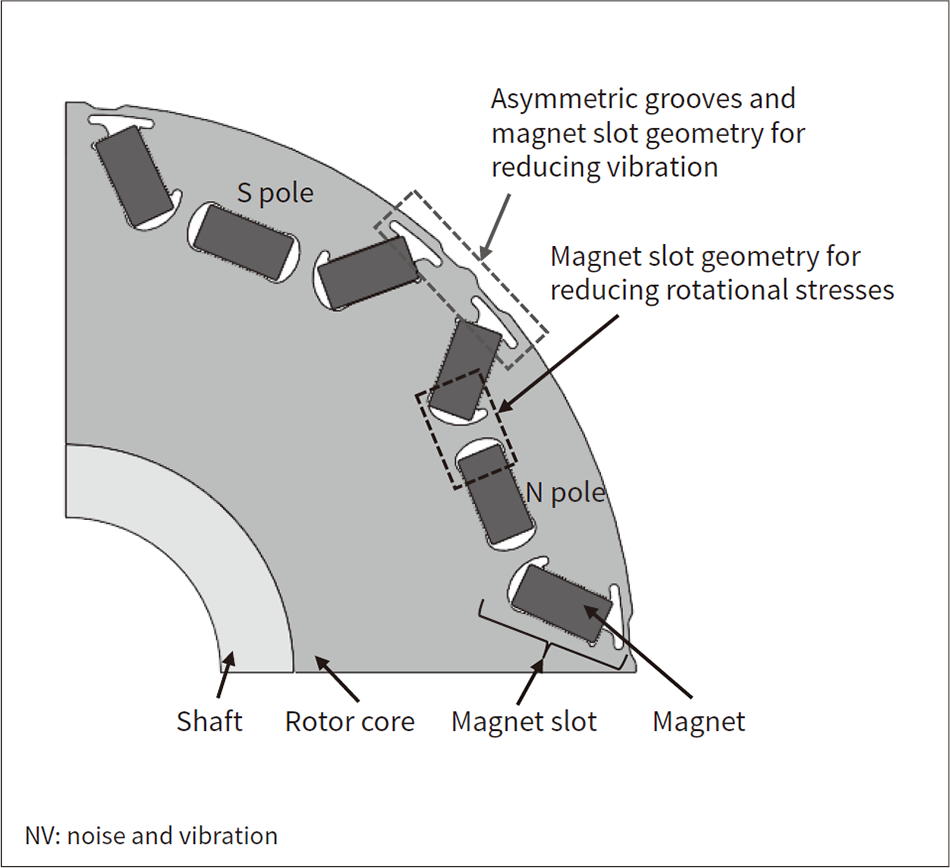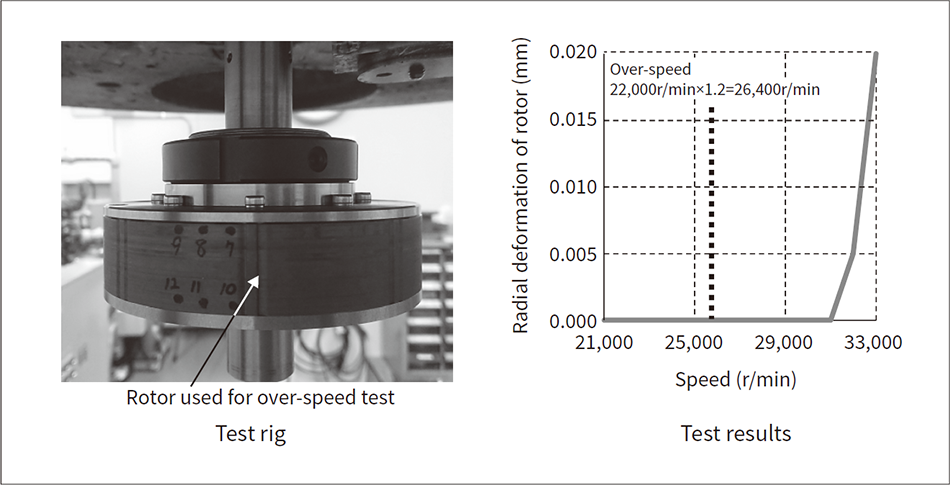
Highly Efficient and Compact e-Axle Technology
devised a rotor geometry
The motor, inverter, and gearbox components that make up an e-Axle system need to be made smaller to free up space in the vehicle and to provide more flexibility over where the system can be installed. The power output of a motor is obtained by multiplying torque by speed, with the torque being roughly proportional to motor size. This means that, when designing a motor, the motor can be made smaller by increasing its speed and thereby reducing the torque required to achieve the desired output. This higher speed in turn requires a greater gear ratio to achieve the axle torque, meaning a larger gearbox. Given that motor speeds in the range of 20,000 to 25,000 r/min are ideal for minimizing the overall size of an e-Axle unit, Hitachi Astemo has developed a small, high-speed electric motor with a maximum speed of 22,000 r/min.

One feature of this rotor is the enlargement of the inner end sections of the slots where the magnets are housed. This enables a greater radius of curvature, increasing the strength of the rotor core by preventing the concentration of stresses. A second feature is the enlargement of the outer end sections of the magnet slots in the region near the center of the magnetic pole. Grooves are also formed on the outer circumference of the rotor, with the shapes of these grooves being asymmetric with regard to the north and south magnetic poles. The effect of these is to reduce the higher harmonics in the flux density between rotor and stator that are a source of vibration and noise.
The results of calculating the electrical characteristics of a motor fitted with the new rotor indicated that it would achieve its development targets of 155-Nm maximum torque and 120-kW maximum output. Likewise, torque ripple, one of the factors in vibration and noise, was estimated to be 4.5 Nm or less over the entire operating range. Similarly, a strength analysis found that, under over-speed conditions (22,000 r/min × 1.2), the maximum principal stress remained within the material’s yield stress.
An over-speed spin test was also conducted to measure the actual rotor strength characteristics (see Figure on the bottom).
This spin test found no indication of rotor deformation even at speeds in excess of that used to represent an over-speed condition. This verified that the strength of the new rotor could be secured. Meanwhile, load testing conducted to measure the electrical characteristics of the motor verified that its speed-torque curve matched the design values.
This work provided experimental verification of the successful development of a motor with a rotor geometry designed for high-speed operation, and demonstrated that it achieved the desired electrical and strength characteristics.

Join us at Hitachi Astemo!